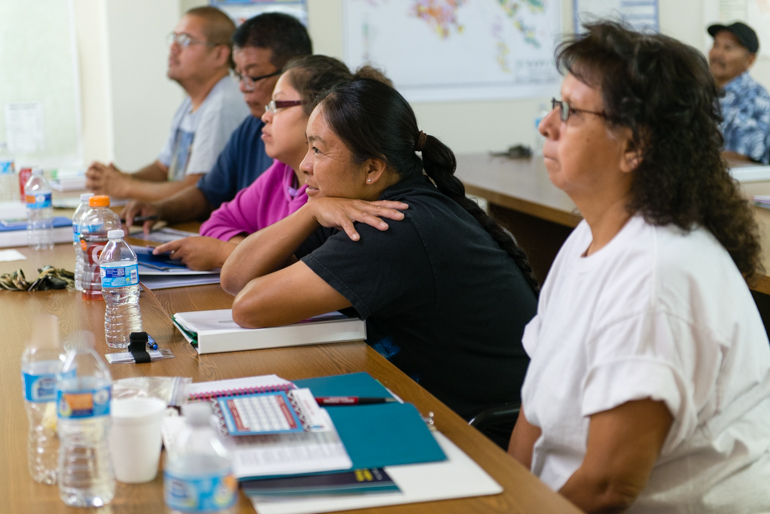People who want to sign up for a policy on healthcare.gov after the annual open enrollment period ends Jan. 31 may have to produce a paper trail proving that they qualify for a “special enrollment period” before their coverage can begin, according to details of a pilot program described last week by federal officials.
But the verification measures, long sought by insurance companies, may deter the very consumers the marketplace needs to attract: healthy people who may not bother signing up if doing so is a hassle.
The insurance needs of many of the shoppers who use the health marketplaces don’t fit neatly into the three-month annual open enrollment period. For example, nearly 30 million people — workers plus their families — lose employer-sponsored coverage every year outside of open enrollment, researchers at the Urban Institute found. But they estimated that only about 5 percent of those eligible for a special enrollment period signed up for marketplace coverage in 2015.
In California, which has a state-run exchange, consumers have 60 days from the date the “qualifying life event” occurs to enroll in a Covered California health insurance plan or to change their existing plan. If after 60 days consumers do not sign up, they have to wait until the next open-enrollment period unless they experience another qualifying event.
Everyone seems to agree that special enrollment periods are necessary to accommodate people who have major life changes such as the loss of job-based health insurance, birth of a child or divorce. But insurers maintain that customers have abused these periods, waiting to sign up until they’re sick and need pricey care.
A study commissioned by two insurance industry groups, America’s Health Insurance Plans and the Blue Cross Blue Shield Association, found that the monthly health insurance claims of individuals who enrolled in coverage under a special enrollment period in 2015 were 41 percent higher during the first three months of coverage than the claims of people who enrolled during regular open enrollment.
That’s not surprising, said Sarah Lueck, a senior policy analyst at the Center on Budget and Policy Priorities. Many consumers are not aware of the availability of special enrollment periods, and the people who are going to make signing up a priority when they lose their jobs or have another life change often are those who have health care needs.
“We reject the idea of widespread abuse [of special enrollment periods], and that the evidence of costs is evidence of abuse,” she said.
Until last February, the federal Centers for Medicare & Medicaid Services — which runs the federal marketplace used by three-quarters of the states — didn’t verify the eligibility of people signing up in a special enrollment period. In June, CMS began to require that people who signed up through the healthcare.gov website provide documentation for some of the most common special enrollment triggering events, including the loss of other insurance coverage, permanent relocation, marriage, birth or adoption. People could receive coverage while their documents were reviewed, however.
The pilot project described last week will tighten up documentation requirements still further. Starting next June, half of customers who apply for certain types of special enrollment periods on healthcare.gov will be required to submit documents verifying their eligibility before their coverage begins. (The specific enrollment categories that will be affected is unclear, except that the pilot will include applications based on the loss of other insurance coverage.) Individuals will have 30 days to submit their documents, after which the marketplace with forward their enrollment information to the insurer.
Neither AHIP nor the Blue Cross Blue Shield Association responded to a request for comment about the pilot program.
Last February, Covered California, which operates under different rules than the federal exchange, proposed tightening the rules for special-enrollment periods by making consumers provide documentation proving they’re eligible.
Under the proposal, consumers would have to offer such proof as a marriage license or birth certificate. Changing the policy could lead to 10 percent to 25 percent lower enrollment during special enrollment, a Covered California official said.
Consumer advocates opposed the proposal, saying they were not convinced there’s a problem. Insurers voiced support. However, no final vote has been taken on the proposal.
California is not required to adopt the federal guidelines, said Covered California spokeswoman Lizelda Lopez.
Policy analysts are concerned that the federal requirements would discourage people, particularly healthy people, from applying. There is some evidence that this is already happening, they say. The fact sheet describing the upcoming pilot reported that sign-ups using special enrollment periods have dropped by 20 percent since the new verification process began in June compared with 2015. Particularly concerning is the finding that younger applicants were more likely to drop out of the verification process than older ones.
“We don’t know if the reason [for the decline] is that people are not eligible or that the process is now so onerous that they’re not completing it,” said Elizabeth Hagan, a senior policy analyst at Families USA, a consumer advocacy group.
Unlike the regular open enrollment process, in which the marketplace’s computer system electronically searches for the identification, income and other data necessary to determine eligibility for coverage, the pilot program puts the burden on the consumer to upload or mail in copies of relevant documents.
Stan Dorn, a senior fellow at the Urban Institute who authored the report on special enrollment periods, suggested that there are better ways to address the issue than requiring consumers to provide documentation. He said the existing electronic system through which doctors query insurers to confirm patients’ insurance coverage could provide the basis for healthcare.gov to confirm that applicants have lost their insurance and may be eligible for a special enrollment period.
“We have a lot of experience that eligible consumers faced with [documentation requirements] will drop out of the process,” Dorn said.
Emily Bazar contributed to this report.
This story was produced by Kaiser Health News, an editorially independent program of the Kaiser Family Foundation.
